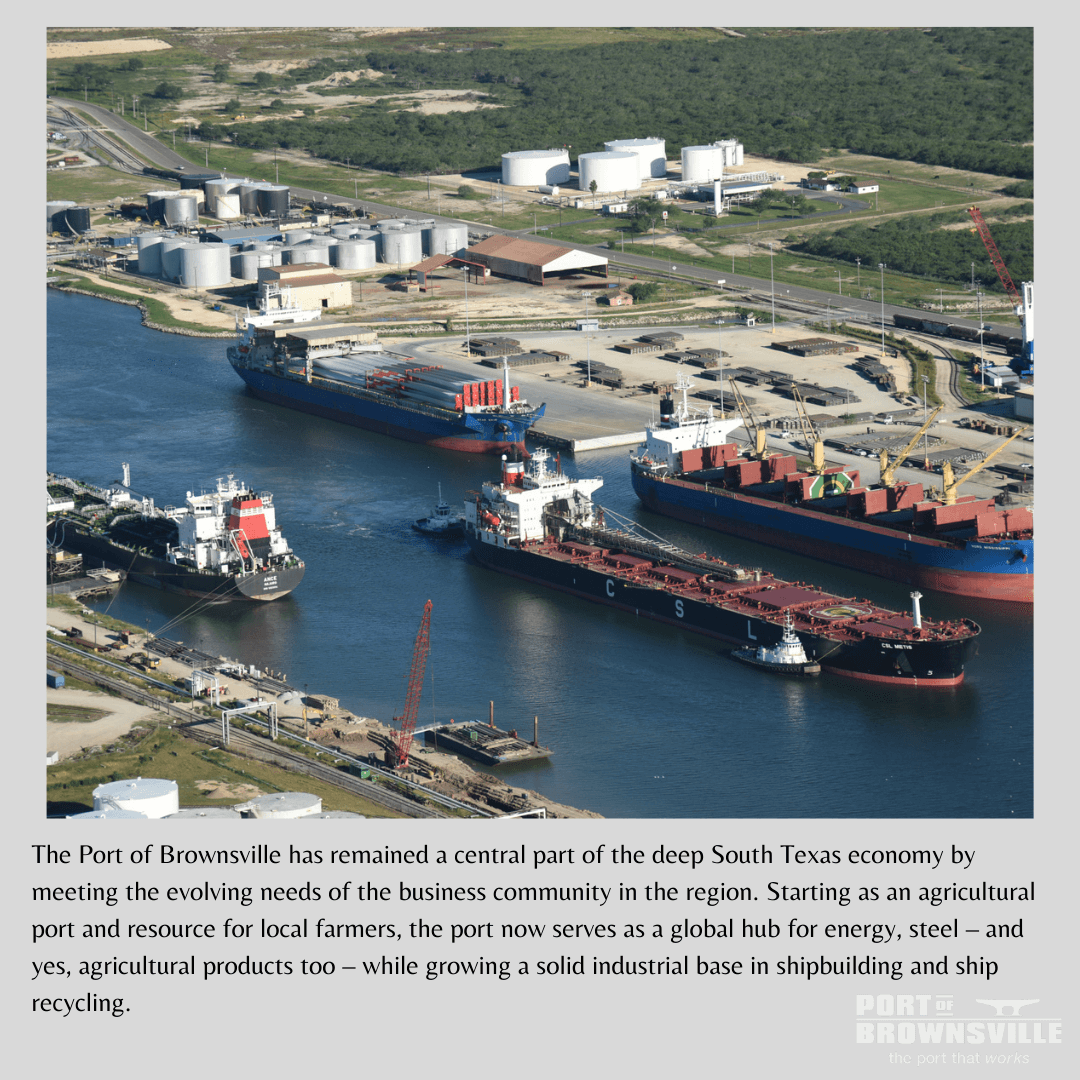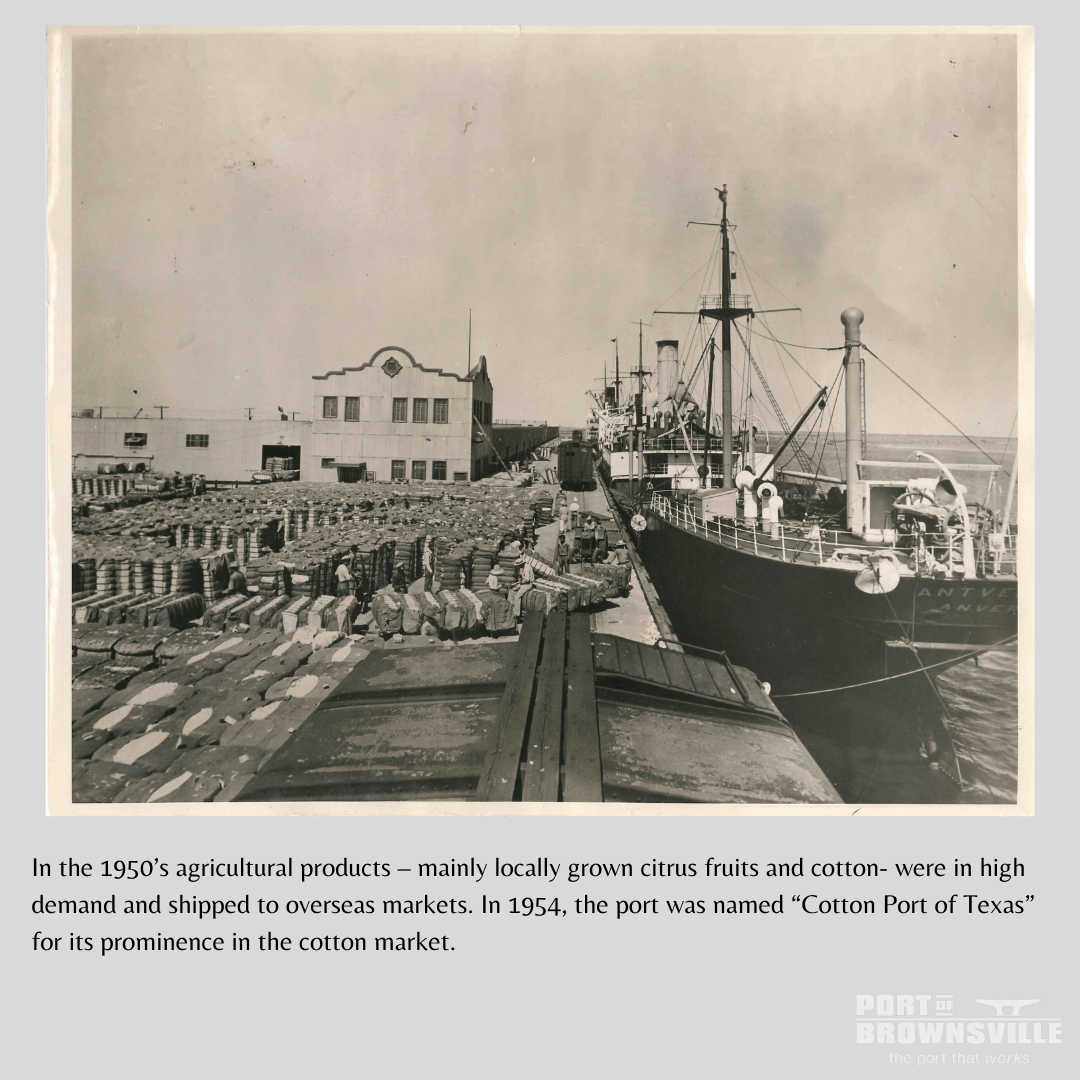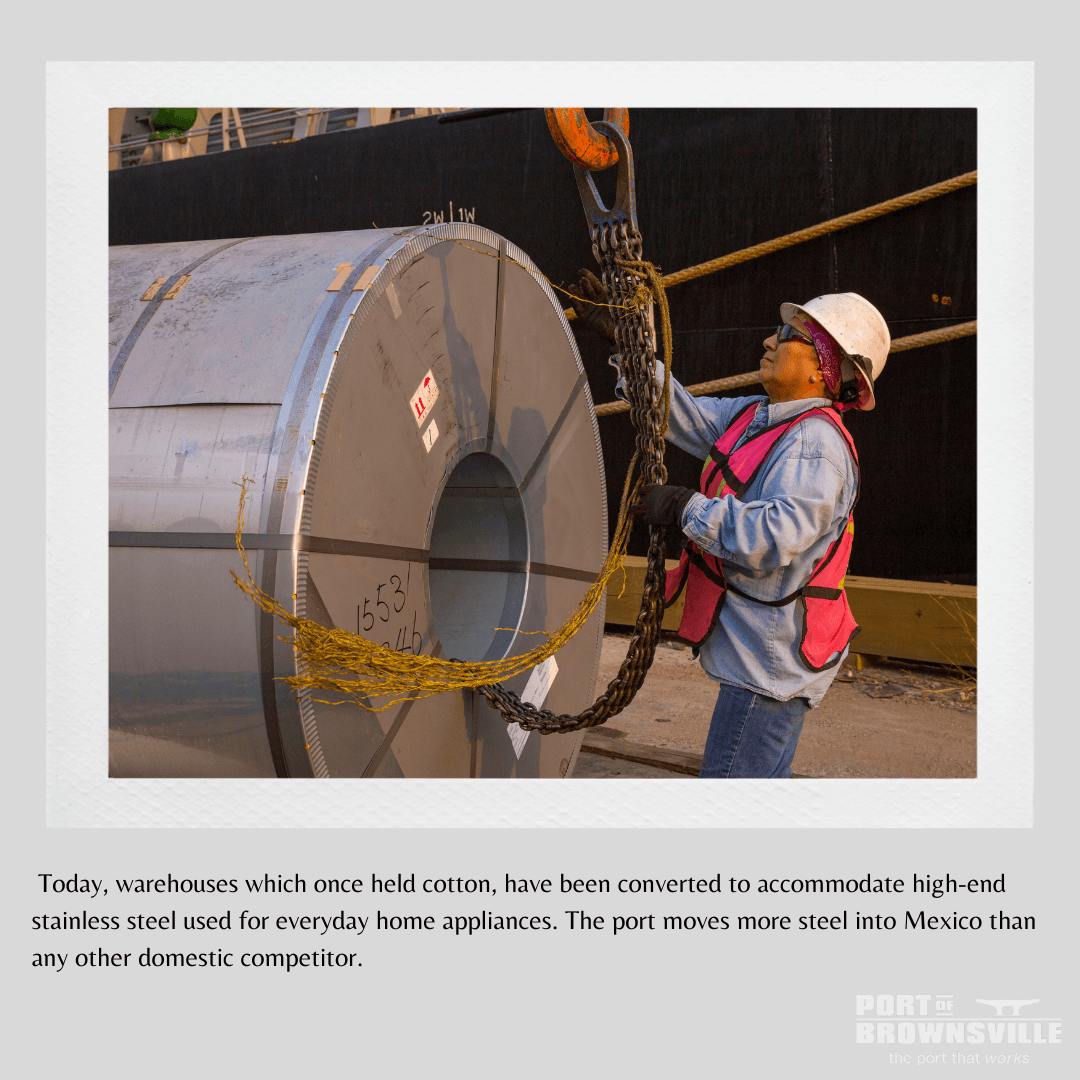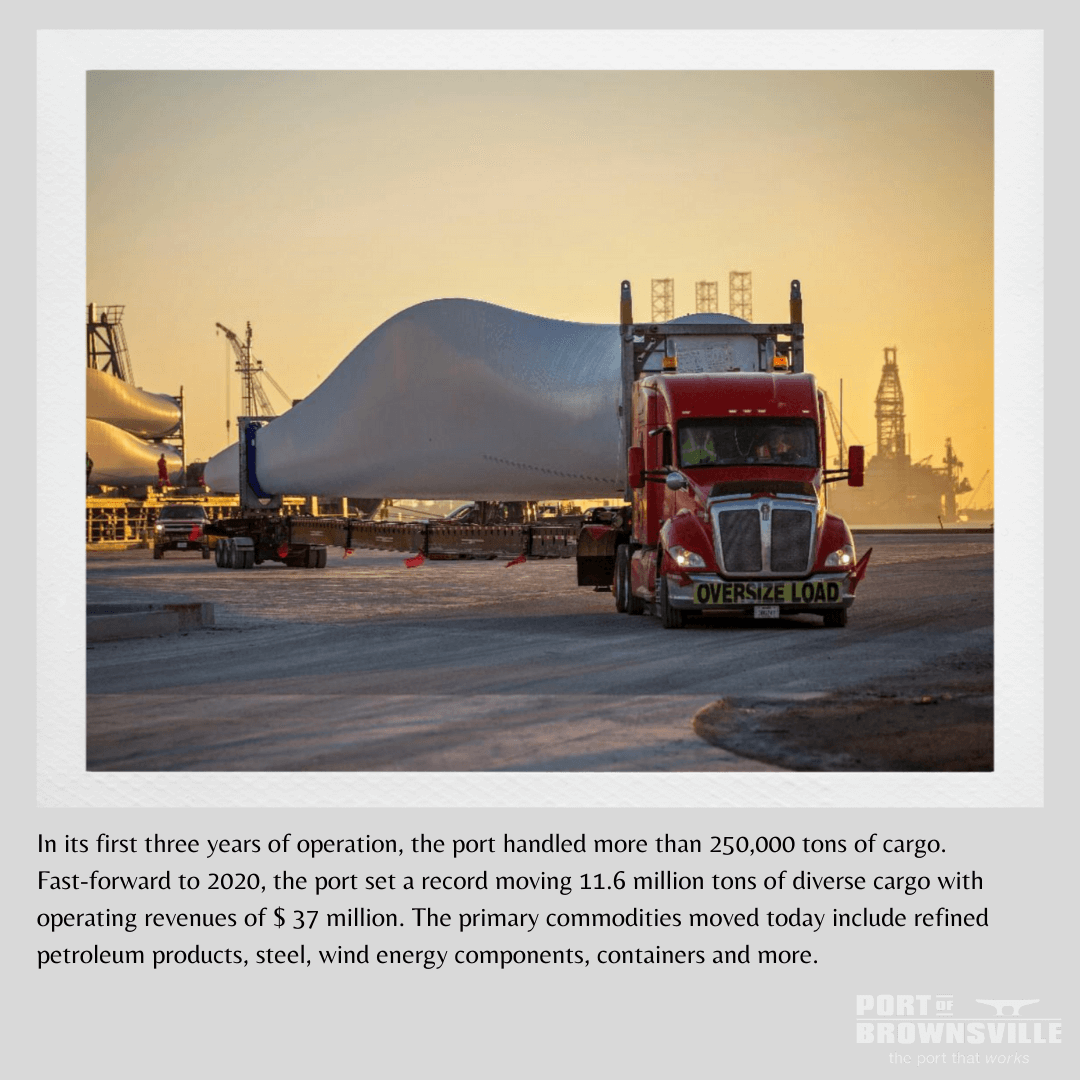Editor’s Note: This article is featured in the latest edition of the Port of Brownsville Directory
The Port of Brownsville began 85 years ago as a major agriculture hub for the region, and 2020 saw the restart of grain exports of regionally grown sorghum destined to China, creating new international market opportunities for South Texas farming families. The port completed the rehabilitation of Bulk Cargo Dock, improving access to the 3 million-bushel grain elevator operated by WestPlains LLC. In 2020, the port received a $14.5 million grant from the U.S. Department of Transportation to improve railroad, road and ship-loading infrastructure at the Bulk Cargo Dock and further expand WestPlains’ grain-handling operations at the facility.
To keep up with growing demand for additional cargohandling capabilities, the port invested in a pair of new mobile harbor cranes delivered in 2020. Each crane has 28 wheels and 14 axels and stands at more than 150 feet at their highest height. They are equipped with an advanced mobile harbor crane drive technology that meets EPA Tier 4f emission standards, helping the Port of Brownsville reduce its environmental footprint. The cranes also boast a maximum lifting capacity of 137.5 short tons and an outreach of up to 167 feet.
Construction of the $25.6 million South Port Connector Road continues and is scheduled for completion by the end of 2021. The project is a partnership of the BND, Cameron County, the Cameron County Regional Mobility Authority (CCRMA), the Rio Grande Valley Metropolitan Planning Organization (RGVMPO) and the Texas Department of Transportation (TxDOT). The port connector offers a direct connection to the southside of the Brownsville Ship Channel and an alternate route to nearby commercial lanes at the Veterans International Bridge. It will also facilitate the flow of cargo and other goods related to the space industry from the port docks to the neighboring SpaceX facility at Boca Chica.
Additional outside storage capacity also experienced dramatic expansion at the port in 2020, now totaling more than 62-acres of purpose-built facilities to accommodate heavy point-load-bearing cargo, like wind energy nacelles – some weighing more than 112 tons each. Along with hubs, tower sections and windmill blades (the largest reaching 265-feet-long), the Port of Brownsville ranks among the leading U.S. ports capable of receiving, storing and moving these massive components. And due to the prevailing winds of south Texas, combined with the abundance of available land on both sides of the U.S. Mexico border, windmill farms are growing all across the region.
Many port tenants are investing millions of dollars to grow their businesses. Refined petroleum storage tank farms are sprouting up at the Port of Brownsville. Combined estimates place tank farm storage capacity – underway or complete – to now be at 7.1 million barrels. And there’s more under construction.
Growth is clearly evident around every turn at the Port of Brownsville, the port that works.
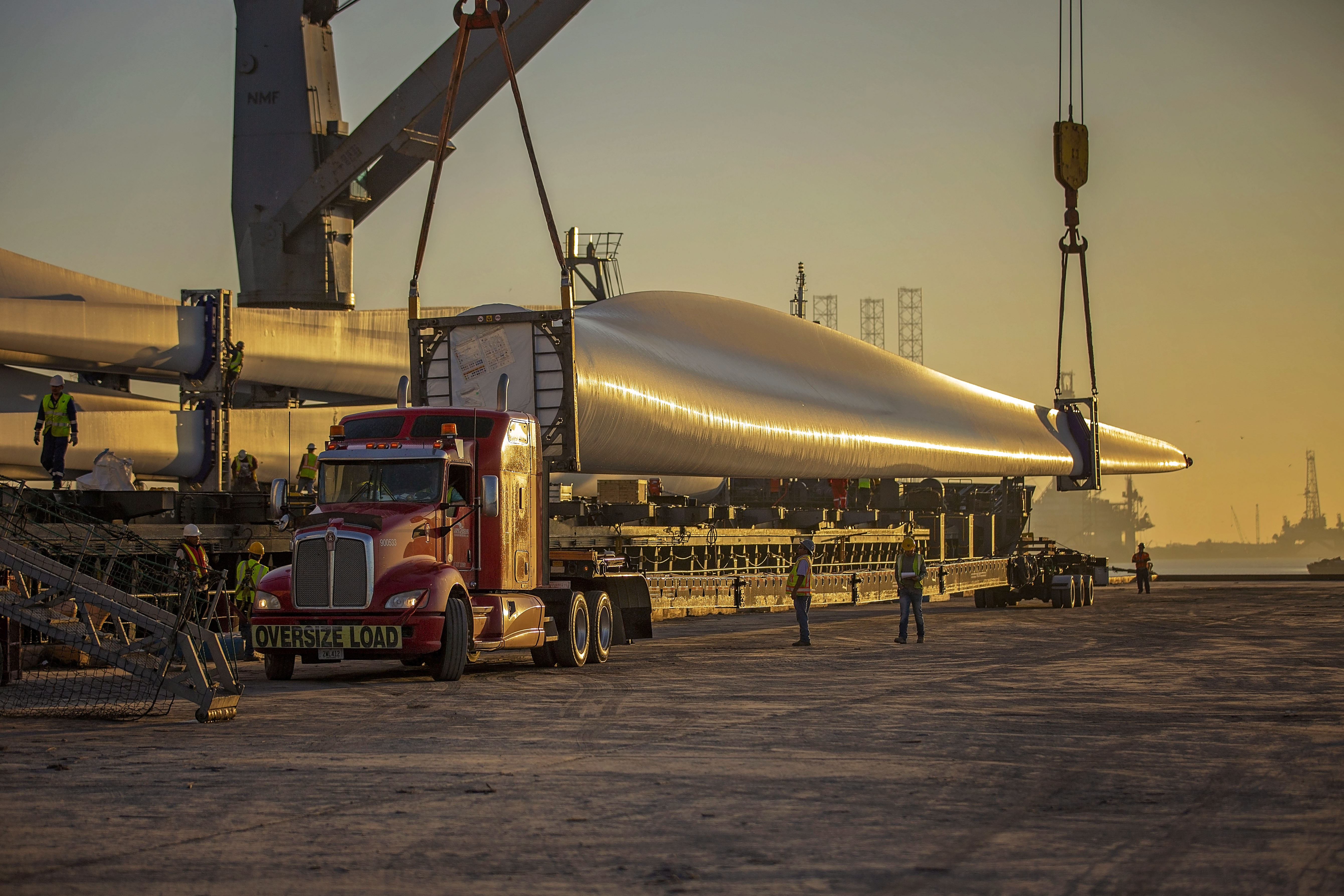
The Port of Brownsville ranks among the leading U.S. ports capable of receiving, storing and moving massive components for the wind energy sector. In 2020, the port handled a record 21 wind energy projects, including the largest windmill blades ever imported to the U.S. at 265-feet long.




